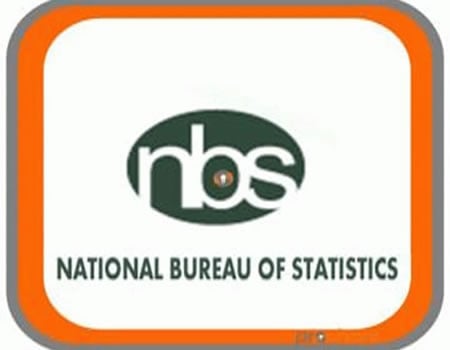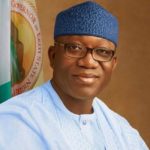Gross domestic product (GDP) is the total monetary value of all final goods and services that have been exchanged within an economy over a set period of time. Its volume is used to determine how well an economy is performing.
Last week, the National Bureau of Statistics (NBS) released the Gross Domestic Product (GDP) report for the second quarter of 2021, which showed that the economy grew by 5.01 per cent when compared with the same period of 2020.
According to the report, in real terms, GDP grew by 5.01per cent (year-on-year) in the second quarter of 2021, marking three consecutive quarters of growth following the negative growth rates recorded in the second and third quarters of 2020.
It was the third consecutive quarter of growth. Non-oil sector grew by 6.74per cent while the oil sector declined by 12.65per cent year-on-year.
Non-oil sector contribution grew from 90.75per cent recorded in the previous quarter to 92.58per cent in Q2 2021 while oil sector declined from 9.25per cent to 7.42per cent. Real GDP grew within the first six months of 201 by 2.70per cent compared to -2.18per cent for the first half of 2020.
Nevertheless, quarter on quarter, real GDP grew at -0.79per cent in Q2 2021 compared to the 0.5per cent in Q1 2021, reflecting slower economic activity.
A professor of economics at the University of Lagos, Ndubuisi Nwokoma, while reacting to the latest figures by NBS said, “GDP growth means there is a picking up of economic activities and growth rate is talking about growth from a base.
“Remember that the economy shrank by -6per cent in Q2 of 2020 and it recovered by 5per cent in Q2 of 2021. It is not necessarily about the volume but about the increase over a base.
“If the base had gone down and it now grows from that low base, then it is nothing really. It is good to celebrate growth but it should be looked at from that particular perspective.
“Secondly, you want to take a look at the growth drivers; transportation. Last year, people hardly travelled. Aviation went down.
“Now, people are travelling so there is an upsurge in that sector. Definitely, the growth would go up. So the issue is whether the level of GDP that we are attaining before has been reached or not.”
Nwokoma described the 5per cent increase y-o-y as critical “because the base we are using to determine the growth is low.”
He believed “we could have done a lot better but farmers are scared of going to the farms and so, output from agriculture, which is a large contributor to GDP is actually under threat.”
He warned “if we don’t address insecurity, we’ll keep on going round in circles and not been about to bring about the desirable output that the economy ought to have.
“We’ve been going down over the period: recession and coming out of recession. For the past three quarters, we’ve been having economic growth but it is from a low base.”
Also, a senior economist at Nigeria Economic Summit Group (NESG), Wilson Erumabo expressed cautious optimism at the year-on-year growth figure saying that in the second quarter of 2020, there was a lockdown of the economy because of the COVID-19 pandemic and those in the production of non-essential items could not produce.
“The 5per cent growth is comparing GDP of Q2 of 2021 and Q2 of 2020. You are comparing a period when economic activities have come to life and all the lockdown rules have been relaxed and a period when there was lockdown in Q2 of last year when we had a -6.1per cent decline. That is basically why you saw this very high growth rate in GDP.
“But if you compare Q2 2021 with Q1 2021, you would realise that output declined, which meant that the economy was even much better in the first three months of this year than in April to June. That is something that needs to be paid attention to as opposed to only the five percent.”
For Partner and Chief Economist at PriceWaterhouseCoopers (PWC) Dr. Andrew Nevin however, policymakers should not read too much into the numbers because they are unreliable.
Interpreting the NBS figures, he doubted “that the GDP numbers that we have here are accurate because we have more than 50 percent of the economy in the informal sector.
“It is not clear how much the GDP captured the informal economy so I am not sure if we can put too much reliance on these GDP numbers. So I am worried about if this 5per cent number is the reality.
“We are talking about GDP that is slow. I call on policymakers not to read too much into the numbers. The statistics is very difficult to calculate.”
According to Nevin, when the economy shrank by six percent between Q2 of 2019 and Q2 of 2020 but improved by five percent from Q2 2020 and Q2 2021, it is still one percent slower than two years ago. Within the two years however, population grew by about six percent.
“So, from GDP perspective, Nigerians are still considerably poor. We have GDP growth less than population growth in 2015 and 2016 and 2017 and 2018 and 2019 and 2020 and 2021.
“I hope not again in 2022. So we have been getting poorer and poorer per capita for a very long time so one will not be surprised we have the type of poverty numbers and unemployment numbers, particularly among the youths. So the number does not mean that the economy has improved yet but I am optimistic for the future.”
Citing inflation reports to further buttress his point, the PWC executive said NBS releases inflation figures lowering but at the end of the day, 30 per cent of Nigerians still spend 50 per cent of their income on food and so, what they care about is what is the price of food in the local market.
“So I will really advise everyone not to rely too much on the numbers. What we need to focus more on is what happens underground in terms of poverty levels, in terms of unemployment etc.
“From my perspective, we have not really come out of recession. We have such high population growth and if we don’t have a minimum of five per cent or six per cent or eight per cent growth, we are not getting better off so one or two per cent growth that we have had in the last few years is still a recession because we have high population growth.”
To him, one fundamental thing that is driving slow growth is dearth of investment. “We need to reinvest about 28 percent of GDP every year to get six to eight percent growth. Nigeria is only investing about 17 to 19 percent, which is just about half of what is required.
In this circumstance, we will continue to get growth of one or two per cent and people will continue to get poorer and poorer per capital.
“So why are people not investing in Nigeria? Why are Nigerians not investing, why is the diaspora not investing and why are other groups outside not investing?
“Until we address this fundamental issue, we will continue to have this growth that follow the population growth. How many years can we have declining income per capita? In the last 18 months, we have seen security situation worsening,” he declared.
A World Bank report titled “Of roads less travelled: Assessing the potential for migration to provide overseas jobs for Nigeria’s youth” noted that the number of Nigerians active in the labour force plunged by 20 million between 2018 and 2020 despite three per cent annual birth rate.
There report described this development as a sign of hopelessness and frustration as many have given up and are concentrating efforts on how to migrate from the country.
It disclosed that before the significant drop in number recorded between 2018 and 2020, there was considerable growth in the working-age population and the active labour force population from 2010.
“Between 2014 and 2020, Nigeria’s working-age population grew from 102 million to 122 million, growing at an average rate of approximately three per cent per year.
“Similarly, Nigeria’s active labour force population, i.e., those willing and able to work among the working-age population, grew from 73 million in 2014 to 90 million in 2018, adding 17.5 million new entrants to Nigeria’s active labour force.
“Since 2018, however, the active labour force population has dramatically decreased to around 70 million — lower than the level in 2014 — while the number of Nigerians who are in the working-age population but not active in the labour force has increased from 29 million to 52 million between 2014 and 2020.”
YOU SHOULD NOT MISS THESE HEADLINES FROM NIGERIAN TRIBUNE
Beyond the feel good impact of 5per cent y-o-y GDP growth Beyond the feel good impact of 5per cent y-o-y GDP growth
We Have Not Had Water Supply In Months ― Abeokuta Residents
In spite of the huge investment in the water sector by the government and international organisations, water scarcity has grown to become a perennial nightmare for residents of Abeokuta, the Ogun State capital. This report x-rays the lives and experiences of residents in getting clean, potable and affordable water amidst the surge of COVID-19 cases in the state… Beyond the feel good impact of 5per cent y-o-y GDP growth Beyond the feel good impact of 5per cent y-o-y GDP growth Beyond the feel good impact of 5per cent y-o-y GDP growth Beyond the feel good impact of 5per cent y-o-y GDP growthBeyond the feel good impact of 5per cent y-o-y GDP growth Beyond the feel good impact of 5per cent y-o-y GDP growth
WATCH TOP VIDEOS FROM NIGERIAN TRIBUNE TV
- Let’s Talk About SELF-AWARENESS
- Is Your Confidence Mistaken for Pride? Let’s talk about it
- Is Etiquette About Perfection…Or Just Not Being Rude?
- Top Psychologist Reveal 3 Signs You’re Struggling With Imposter Syndrome
- Do You Pick Up Work-Related Calls at Midnight or Never? Let’s Talk About Boundaries






